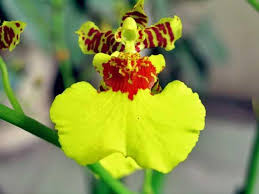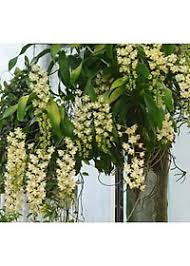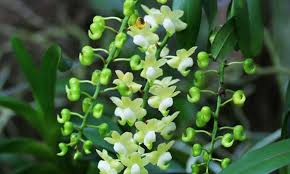
Dancing Lady Orchids, scientifically known as *Oncidium*, are renowned for their exquisite blooms that resemble dancing figures. With their unique appearance and vibrant colors, they have captured the hearts of orchid enthusiasts worldwide. However, for beginners, growing these stunning orchids can be challenging due to their specific care requirements. This comprehensive guide will provide essential tips and best practices for successfully cultivating Dancing Lady Orchids, ensuring that both novice and experienced gardeners can enjoy their beauty.
## 1. Introduction to Dancing Lady Orchids
### 1.1 What Are Dancing Lady Orchids?
Dancing Lady Orchids belong to the *Oncidium* genus, which encompasses over 300 species. They are native to tropical regions of Central and South America, where they typically grow in warm, humid environments. The flowers are characterized by their striking shapes and vibrant colors, often featuring yellow, brown, and purple hues.
### 1.2 Why Choose Dancing Lady Orchids?
Dancing Lady Orchids are an excellent choice for beginners for several reasons:
– **Unique Beauty**: Their distinct appearance adds a touch of elegance to any space.
– **Long Blooming Period**: With proper care, these orchids can bloom for several months.
– **Variety**: There are many species and hybrids available, allowing for diverse growing options.
## 2. Understanding the Basic Needs of Dancing Lady Orchids
### 2.1 Light Requirements
Dancing Lady Orchids thrive in bright, indirect light. Too much direct sunlight can scorch their leaves, while insufficient light may hinder flowering.
– **Ideal Light Conditions**: Place your orchids near east or west-facing windows, where they can receive bright, filtered light for at least 6 hours a day.
– **Signs of Inadequate Light**: If the leaves turn yellow or grow leggy, it may indicate that the plant is not receiving enough light.
### 2.2 Temperature Preferences
These orchids prefer warm temperatures, generally ranging from 65°F to 75°F (18°C to 24°C) during the day and slightly cooler at night.
– **Temperature Fluctuations**: While they can tolerate brief temperature changes, extreme fluctuations can stress the plant. Aim to maintain a consistent temperature.
### 2.3 Humidity Needs
Dancing Lady Orchids thrive in humid environments, typically requiring humidity levels of 40% to 60%.
– **Increasing Humidity**: To boost humidity, consider using a humidity tray filled with water and pebbles or a room humidifier. Regular misting can also help, but avoid over-saturating the leaves.
## 3. Selecting the Right Potting Medium
### 3.1 Choosing a Suitable Mix
The potting medium is crucial for the health of Dancing Lady Orchids, as it provides essential aeration and drainage.
– **Orchid Potting Mix**: Look for a commercially available orchid mix, which typically contains a blend of bark, perlite, and other organic materials. This mix promotes good drainage while retaining some moisture.
### 3.2 Pot Selection
– **Type of Pot**: Choose pots with drainage holes to prevent water accumulation. Clay pots are excellent for promoting airflow but can dry out quickly, while plastic pots retain moisture better.
## 4. Watering Your Dancing Lady Orchids
### 4.1 Understanding Watering Needs
Overwatering is a common mistake among beginners. Dancing Lady Orchids prefer to dry out slightly between waterings.
– **Watering Schedule**: Water your orchids every 1 to 2 weeks, allowing the top inch of the potting medium to dry out before the next watering.
– **Water Quality**: Use distilled or rainwater when possible, as tap water may contain chemicals harmful to orchids.
### 4.2 Signs of Overwatering
– **Yellowing Leaves**: This can indicate root rot due to excess moisture.
– **Mushy Roots**: Inspect the roots if you suspect overwatering; healthy roots should be firm and white.
## 5. Fertilizing Dancing Lady Orchids
### 5.1 Choosing the Right Fertilizer
Dancing Lady Orchids benefit from regular fertilization during their growing season, typically from spring to fall.
– **Fertilizer Type**: Use a balanced, water-soluble orchid fertilizer with an NPK ratio of 30-10-10 or similar. Fertilizers formulated specifically for orchids often yield the best results.
### 5.2 Fertilization Frequency
– **Dilution**: Always dilute the fertilizer to half-strength to prevent burning the roots.
– **Schedule**: Fertilize every 2 to 4 weeks during the growing season and reduce or stop fertilization in the winter months when the plant is dormant.
## 6. Repotting Your Orchids
### 6.1 When to Repot
Repotting is essential for the health of your Dancing Lady Orchids, typically every 1 to 2 years.
– **Signs It’s Time to Repot**: Look for roots growing out of the pot, a deteriorating potting medium, or if the plant becomes top-heavy.
### 6.2 Repotting Techniques
– **Gently Remove the Plant**: Carefully take the orchid out of its pot, and inspect the roots. Trim away any dead or rotting roots with sterilized scissors.
– **Fresh Potting Medium**: Place the orchid in a new pot with fresh orchid potting mix, ensuring the roots are well-supported and not tightly packed.
## 7. Encouraging Blooming
### 7.1 Understanding Bloom Cycles
Dancing Lady Orchids typically bloom once a year, with the timing depending on the specific variety and growing conditions.
### 7.2 Tips for Encouraging Blooms
– **Provide Adequate Light**: Ensuring the orchids receive sufficient light is key to promoting blooming.
– **Temperature Changes**: A slight drop in temperature during the night can encourage flower spikes to develop.
– **Feeding Schedule**: Maintain a regular fertilization schedule during the growing season to promote healthy growth and blooming.
## 8. Managing Pests and Diseases
### 8.1 Common Pests
Dancing Lady Orchids can be susceptible to pests such as aphids, mealybugs, and spider mites.
– **Identifying Pests**: Regularly inspect your plants for signs of pests, including sticky residue, webbing, or discolored leaves.
### 8.2 Pest Control Strategies
– **Natural Remedies**: Use insecticidal soap or neem oil to control pest populations. Spray the affected areas and follow up as needed until the pests are eliminated.
– **Preventive Measures**: Maintain good air circulation and avoid overcrowding your orchids to reduce the risk of pests and diseases.
### 8.3 Fungal and Bacterial Diseases
– **Symptoms**: Look for black spots, yellowing leaves, or wilting. Fungal infections often thrive in overly damp conditions.
– **Management**: Ensure proper watering practices and improve air circulation around the plants. Treat fungal infections with appropriate fungicides if necessary.
## 9. Creating the Ideal Environment
### 9.1 Placement of Your Orchids
– **Indoor vs. Outdoor**: If you live in a warm climate, consider placing your Dancing Lady Orchids outdoors during the summer months. Ensure they are protected from harsh sunlight and extreme weather conditions.
### 9.2 Grouping Plants
– **Companion Plants**: Consider grouping your orchids with other plants that have similar light and humidity requirements. This can help maintain humidity levels and create a microenvironment beneficial for all plants.
## 10. Troubleshooting Common Issues
### 10.1 Leaf Yellowing
– **Causes**: Yellowing leaves can result from overwatering, insufficient light, or nutrient deficiencies.
– **Solution**: Assess your watering schedule and light conditions. If necessary, adjust your fertilization practices.
### 10.2 Poor Blooming
– **Causes**: Lack of blooms can stem from inadequate light, over-fertilization, or improper watering.
– **Solution**: Review your care routine and make necessary adjustments. Providing a cooler nighttime temperature can also stimulate blooming.
## 11. Conclusion
Growing Dancing Lady Orchids can be a rewarding experience for beginners. With their stunning blooms and unique appearance, these orchids can add beauty and elegance to any space. By following the essential tips outlined in this guide—such as providing the right light, temperature, humidity, and care—you can cultivate healthy orchids that flourish and bloom for years to come.
As you embark on your orchid-growing journey, remember to be patient and observant. Each orchid is unique and may require slight adjustments to care practices. With time and experience, you’ll develop a deeper understanding of your Dancing Lady Orchids’ needs, allowing you to enjoy their beauty and elegance in your home. Happy gardening!


